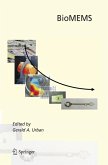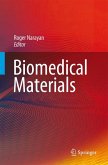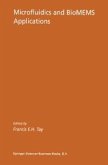BioMEMS and Biomedical Nanotechnology (eBook, PDF)
Volume IV: Biomolecular Sensing, Processing and Analysis
Redaktion: Bashir, Rashid; Wereley, Steven T.
113,95 €
113,95 €
inkl. MwSt.
Sofort per Download lieferbar

57 °P sammeln
113,95 €
Als Download kaufen

113,95 €
inkl. MwSt.
Sofort per Download lieferbar

57 °P sammeln
Jetzt verschenken
Alle Infos zum eBook verschenken
113,95 €
inkl. MwSt.
Sofort per Download lieferbar
Alle Infos zum eBook verschenken

57 °P sammeln
BioMEMS and Biomedical Nanotechnology (eBook, PDF)
Volume IV: Biomolecular Sensing, Processing and Analysis
Redaktion: Bashir, Rashid; Wereley, Steven T.
- Format: PDF
- Merkliste
- Auf die Merkliste
- Bewerten Bewerten
- Teilen
- Produkt teilen
- Produkterinnerung
- Produkterinnerung

Bitte loggen Sie sich zunächst in Ihr Kundenkonto ein oder registrieren Sie sich bei
bücher.de, um das eBook-Abo tolino select nutzen zu können.
Hier können Sie sich einloggen
Hier können Sie sich einloggen
Sie sind bereits eingeloggt. Klicken Sie auf 2. tolino select Abo, um fortzufahren.

Bitte loggen Sie sich zunächst in Ihr Kundenkonto ein oder registrieren Sie sich bei bücher.de, um das eBook-Abo tolino select nutzen zu können.
impairment of the quality of life itself.
- Geräte: PC
- ohne Kopierschutz
- eBook Hilfe
- Größe: 13.17MB
Andere Kunden interessierten sich auch für
![BioMEMS and Biomedical Nanotechnology (eBook, PDF) BioMEMS and Biomedical Nanotechnology (eBook, PDF)]() BioMEMS and Biomedical Nanotechnology (eBook, PDF)113,95 €
BioMEMS and Biomedical Nanotechnology (eBook, PDF)113,95 €![BioMEMS and Biomedical Nanotechnology (eBook, PDF) BioMEMS and Biomedical Nanotechnology (eBook, PDF)]() BioMEMS and Biomedical Nanotechnology (eBook, PDF)161,95 €
BioMEMS and Biomedical Nanotechnology (eBook, PDF)161,95 €![BioMEMS (eBook, PDF) BioMEMS (eBook, PDF)]() BioMEMS (eBook, PDF)113,95 €
BioMEMS (eBook, PDF)113,95 €![Biomedical Materials (eBook, PDF) Biomedical Materials (eBook, PDF)]() Biomedical Materials (eBook, PDF)113,95 €
Biomedical Materials (eBook, PDF)113,95 €![Microfluidics and BioMEMS Applications (eBook, PDF) Microfluidics and BioMEMS Applications (eBook, PDF)]() Microfluidics and BioMEMS Applications (eBook, PDF)113,95 €
Microfluidics and BioMEMS Applications (eBook, PDF)113,95 €![World Congress on Medical Physics and Biomedical Engineering May 26-31, 2012, Beijing, China (eBook, PDF) World Congress on Medical Physics and Biomedical Engineering May 26-31, 2012, Beijing, China (eBook, PDF)]() World Congress on Medical Physics and Biomedical Engineering May 26-31, 2012, Beijing, China (eBook, PDF)233,95 €
World Congress on Medical Physics and Biomedical Engineering May 26-31, 2012, Beijing, China (eBook, PDF)233,95 €![Harnessing Biological Complexity (eBook, PDF) Harnessing Biological Complexity (eBook, PDF)]() Taishin NomuraHarnessing Biological Complexity (eBook, PDF)73,95 €
Taishin NomuraHarnessing Biological Complexity (eBook, PDF)73,95 €-
-
-
impairment of the quality of life itself.
Dieser Download kann aus rechtlichen Gründen nur mit Rechnungsadresse in A, B, BG, CY, CZ, D, DK, EW, E, FIN, F, GR, HR, H, IRL, I, LT, L, LR, M, NL, PL, P, R, S, SLO, SK ausgeliefert werden.
Produktdetails
- Produktdetails
- Verlag: Springer-Verlag GmbH
- Seitenzahl: 410
- Erscheinungstermin: 3. April 2007
- Englisch
- ISBN-13: 9780387258454
- Artikelnr.: 37286613
- Verlag: Springer-Verlag GmbH
- Seitenzahl: 410
- Erscheinungstermin: 3. April 2007
- Englisch
- ISBN-13: 9780387258454
- Artikelnr.: 37286613
Rashid Bashir completed his Ph.D. in 1992. From Oct 1992 to Oct 1998, he worked at National Semiconductor in the Process Technology Development Group as Sr. Engineering Manager. He is currently a Professor of Electrical and Computer Engineering and Courtesy Professor of Biomedical Engineering at Purdue University. He has authored or coauthored over 100 journal and conference papers, has over 25 patents, and has given over 30 invited talks. His research interests include biomedical microelectromechanical systems, applications of semiconductor fabrication to biomedical engineering, advanced semiconductor fabrication techniques, and nano-biotechnology. In 2000, he received the NSF Career Award for his work in Biosensors and BioMEMS. He also received the Joel and Spira Outstanding Teaching award from School of ECE at Purdue University, and the Technology Translation Award from the 2001 BioMEMS and Nanobiotechnology World Congress Meeting in Columbus, OH. He was also selected by National Academy of Engineering to attend the Frontiers in Engineering Workshop in Fall 2003. https://engineering.purdue.edu/LIBNA Professor Wereley completed his masters and doctoral research at Northwestern University and joined the Purdue University faculty in August of 1999 after a two-year postdoctoral appointment at the University of California Santa Barbara in the Department of Mechanical and Environmental Engineering. At UCSB he focused exclusively on developing diagnostic techniques for microscale systems, work which ultimately led to developing, patenting, and licensing to TSI, Inc., the micro-Particle Image Velocimetry technique. His current research interests include designing and testing microfluidic MEMS devices, investigating biological flows at the cellular level, improving micro-scale laminar mixing, and developing new micro/nano flow diagnostic techniques. Professor Wereley has co-authored Fundamentals and Applications of Microfluidics, Artech House, 2002. Professor Mauro Ferrari is a pioneer in the fields of bioMEMS and biomedical nanotechnology. As a leading academic, a dedicated entrepreneur, and a vision setter for the Nation's premier Federal programs in nanomedicine, he brings a three-fold vantage perspective to his roles as Editor-in-Chief for this work. Dr. Ferrari has authored or co-authored over 150 scientific publications, 6 books, and over 20 US and International patents. Dr. Ferrari is also Editor-in-Chief of Biomedical Microdevices and series editor of the new Springer series on Emerging Biomedical Technologies. Several private sector companies originated from his laboratories at the Ohio State University and the University of California at Berkeley over the years. On a Federal assignment as Special Expert in Nanotechnology and Eminent Scholar, he has provided the scientific leadership for the development of the Alliance for Cancer Nanotechnology of the National Cancer Institute, the world-largest medical nanotechnology operation to date. Dr. Ferrari trained in mathematical physics in Italy, obtained his Master's and Ph.D. in Mechanical Engineering at Berkeley, attended medical school at The Ohio State University, and served in faculty positions in Materials Science and Engineering, and Civil and Environmental Engineering in Berkeley, where he was first tenured. At Ohio State he currently serves as Professor of Internal Medicine, Division of Hematology and Oncology, as Edgar Hendrickson Professor of Biomedical Engineering, and as Professor of Mechanical Engineering. He is Associate Director of the Dorothy M. Davis Heart and Lung Research Institute, and the University's Associate Vice President for Health Science, Technology and Commercialization.
Part I. Micro and Nanoscale Biosensors and Materials: Biosensors and Biochips.- Cantilever Assays: A Universal Platform for Multi-plexed Label-Free Bioassays.- An On-chip Artificial Pore For Molecular Sensing.- Cell Based Chemical Sensing Technologies.- Fabrication issues of Biomedical Micro Devices.- Intelligent Polymeric Networks in Biomolecular Sensing.- Part II Processing and Integrated Systems: A Multi-Functional Micro Total Analysis System (µ TAS) Platform for Transport and Sensing of Biological Fluids using Microchannel Parallel Electrodes.- Dielectrophoretic Traps for Cell Manipulation.- BioMEMS for Cellular Manipulation and Analysis.- Implantable Wireless Microsystems.- Microfluidic Tectonics: An integrated organic autonomous platform.- AC Electrokinetic Stirring and Focusing of Nanoparticles.- Part III. Micro-fluidics and Characterization: Particle Dynamics in a Dielectrophoretic Microdevice.- Microfluidics Simulations I.- Modeling Electroosmotic Flow in Nanochannels.- Nano-Particle Image Velocimetry: A Near-Wall Velocimetry Technique with Submicron Spatial Resolution.- Optical MEMS-Based Sensor Development with Applications to Microfluidics.- Vascular Cell Responses to Fluid Shear Stress.
Part I. Micro and Nanoscale Biosensors and Materials: Biosensors and Biochips.- Cantilever Assays: A Universal Platform for Multi-plexed Label-Free Bioassays.- An On-chip Artificial Pore For Molecular Sensing.- Cell Based Chemical Sensing Technologies.- Fabrication issues of Biomedical Micro Devices.- Intelligent Polymeric Networks in Biomolecular Sensing.- Part II Processing and Integrated Systems: A Multi-Functional Micro Total Analysis System (µ TAS) Platform for Transport and Sensing of Biological Fluids using Microchannel Parallel Electrodes.- Dielectrophoretic Traps for Cell Manipulation.- BioMEMS for Cellular Manipulation and Analysis.- Implantable Wireless Microsystems.- Microfluidic Tectonics: An integrated organic autonomous platform.- AC Electrokinetic Stirring and Focusing of Nanoparticles.- Part III. Micro-fluidics and Characterization: Particle Dynamics in a Dielectrophoretic Microdevice.- Microfluidics Simulations I.- Modeling Electroosmotic Flow in Nanochannels.- Nano-Particle Image Velocimetry: A Near-Wall Velocimetry Technique with Submicron Spatial Resolution.- Optical MEMS-Based Sensor Development with Applications to Microfluidics.- Vascular Cell Responses to Fluid Shear Stress.







